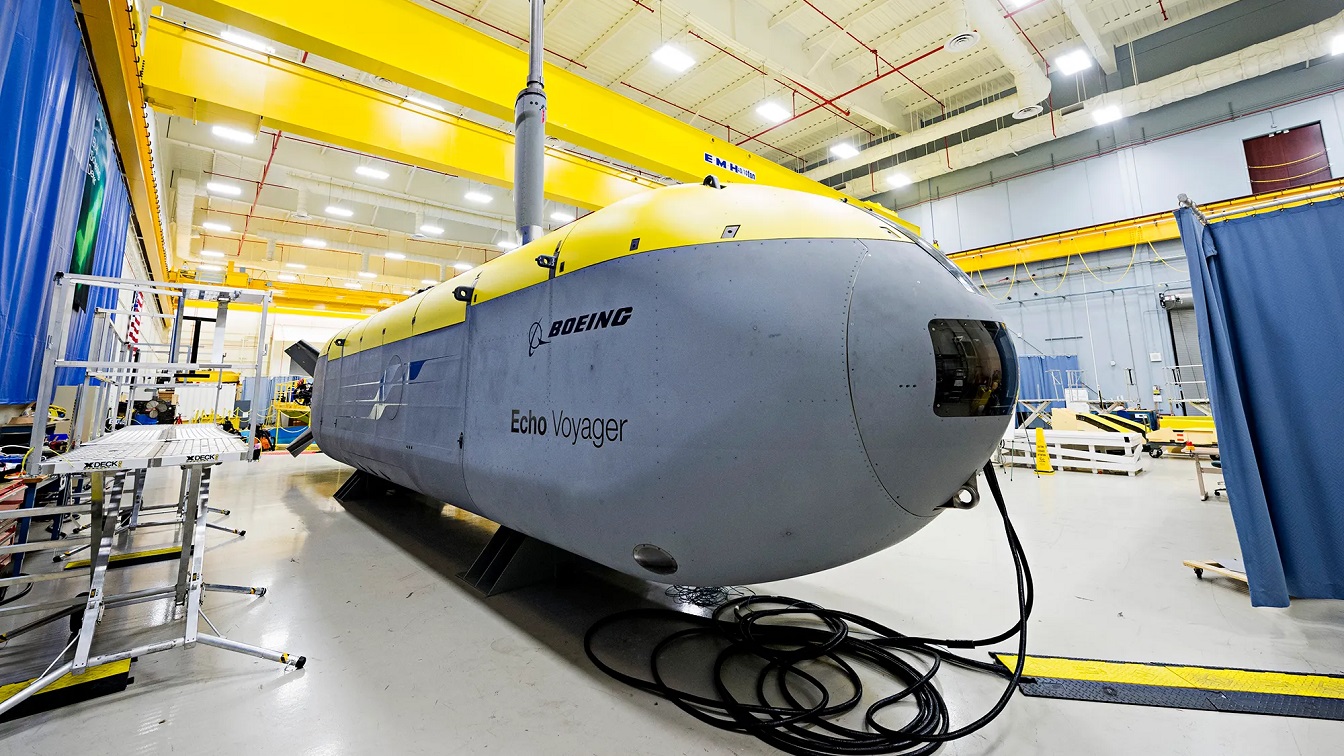This summer, a Senate panel called on the U.S. Navy to continue its efforts to develop a sophisticated unmanned undersea vehicle program.
While the service wanted to discontinue the $100 million program, recent incidents in the Persian Gulf have highlighted its importance. Iran’s Islamic Revolutionary Guard Corps has carried out a number of provocative actions throughout the Gulf this year, threatening the region’s stability and U.S. interests. Iranian vessels have harassed U.S. ships and seized American military unmanned research vessels. The regime has even threatened to destroy warships. These aggressive actions certainly show the potential value of the Pentagon’s unmanned undersea vehicle program.
Meet the Snakehead
The Navy first debuted images of the Snakehead, its Large Displacement Unmanned Undersea Vehicle (LDUUV), in February, when the service christened the vehicle at the Narragansett Bay Test Facility in Rhode Island. The reconfigurable, modular and multi-mission undersea drone is designed to deploy from the Navy’s dry deck shelter-equipped nuclear-powered submarines. As an underwater drone, the Snakehead carries out typical unmanned aerial vehicle duties such as intelligence gathering and area monitoring, but it does so under water.
While public details surrounding the Snakehead are minimal, the drone has been described as the largest UUV to deploy from submarines. In order to properly navigate an area and collect objectives prior to operations, unmanned undersea vehicles sport a number of sensors, including side-scan sonar and bathymetric instruments. In an earlier report, The Drive explained how the unmanned undersea vehicle’s mission is especially critical for submarines as they “help ensure they can safely enter and leave designated areas without being detected or striking obstacles.”
“UUVs in this role can identify potential obstacles or hostile assets in a given area while their host vessels are safely out of harm’s way, or be used to help locate sunken objects or undersea cables,” The Drive wrote. “They can also provide critical mapping and other forms of intelligence for maritime special operations raids and larger-scale amphibious operations.”
Unmanned surface vessels at sea
Although the future of the LDUUV program is unclear, the Navy’s unmanned surface vessel program has ramped up in recent months. The Pacific Fleet stood up an Unmanned Surface Vessel Division this May to expedite the integration of medium and large unmanned surface vessels including the Sea Hunter and Sea Hawk. The Navy’s Saildrone USVs made the news this summer when a Guard Corps vessel attempted to seize two of these vessels operating in the Gulf. The regime claimed the Saildrones were positioned in international shipping lanes and were only tampered with to prevent possible accidents, but this is almost certainly not the case.
Saildrone USVs have proven to be unique tools for the Navy. They can gather a broad range of data, including meteorological, oceanic, and strategic intelligence. The drone’s combined wind-powered propulsion technology and solar-powered sensors allow for intelligence-gathering operations regardless of weather conditions. Additionally,
“The maritime security variants of the vehicles also include an advanced acoustic and camera system that, combined with our proprietary onboard machine learning algorithm, fuses sensor data to deliver significantly expanded information and decision advantage 24/7,” according to the Saildrone’s manufacturers.
A New Battleground Between Iran and the U.S.?
While the attempted seizure of two U.S. Saildrone USVs marked an escalation in behavior, hostile encounters between the U.S. Navy and the Guard Corps have become pretty frequent. Tehran has targeted U.S. vessels in the Strait of Hormuz a number of times over the years. As a strategic geographic chokepoint that sees nearly a fifth of the world’s oil consumption travel through, the Strait is vitally significant to the global economy. By targeting U.S. and other adversarial vessels in the area, Iran shows it can influence the flow of oil.
So far in 2022, Guard Corps boats have harassed U.S. Naval and Coast Guard vessels at least two times. A widely circulated video shows Iranian boats turning head-on toward the USS Sirocco in a dangerous interaction in the Gulf. A few months earlier in March, three IRGC ships traveled dangerously close to American vessels, causing the deployment of multiple warning flares.
Tehran has a long history of harassing ships passing through the Strait, but its recent provocations seem more flagrant. Perhaps the regime is testing the resolve of the Biden administration amid nuclear negotiations in Vienna.
Maya Carlin is a Middle East Defense Editor with 19FortyFive. She is also an analyst with the Center for Security Policy and a former Anna Sobol Levy Fellow at IDC Herzliya in Israel. She has by-lines in many publications, including The National Interest, Jerusalem Post, and Times of Israel.
The image is of Boeing UUV.

